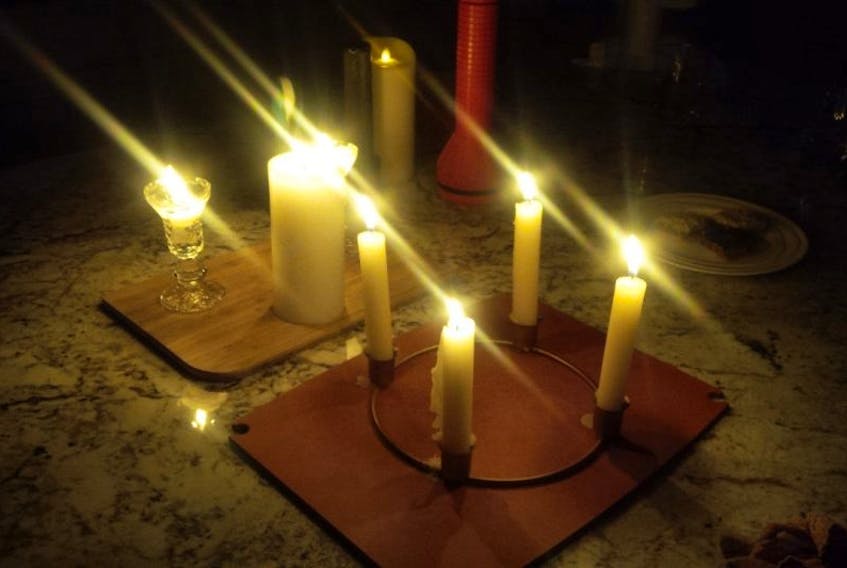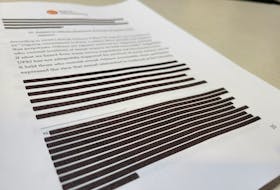#DarkNL seems like a long time ago. But there’s always the chance of a repeat.

There is a confluence of events shaping up that could take every scrap of flexibility out of Newfoundland and Labrador Hydro’s winter plans, leaving the whole electrical grid at the mercy of something as simple as an absolutely average winter cold snap with strong northerly winds.
First, a little history.
Nalcor and Newfoundland Hydro had been preparing for the upcoming winter with what they thought was an ace in the hole. That ace was the ability to bring recall power from the Upper Churchill to the Northeast Avalon on the power line built to bring Muskrat Falls power here.
The Labrador Island Link, the LIL, was supposed to be operational last July, but lingering software problems pulled the plug on the July date. In August, Nalcor said the line would be ready by the end of October — now, the date has been moved again, this time to January 2019. (Liberty Consulting Group, the consultant hired by the Public Utilities Board to monitor winter readiness, puts its assessment of the LIL more bluntly: “We believe it very likely that it will not operate fully reliably in its early months — i.e., the remainder of the coming winter season.”)
Not only has the date been moved, but the amount of power that can be brought across the new line is also changing.
In August, the utility was expecting to bring 170 megawatts (MW) of power across the line by winter. Hydro wrote in a letter to the PUB that it would have “110 MW available supply at Soldier’s Pond in December 2018 and 170 MW available during 2019.”
That didn’t last long, with the utility writing to the PUB again a mere 10 days later, saying, “Since that time, Hydro has been advised that the 170 MW assumed for 2019 may not be achievable and that an assumption of 110 MW is more probable.”
As the situation began looking somewhat dire for the winter ahead, the PUB started to ask Hydro to file a report every two weeks on its progress.
And that 110 MW may turn into even fewer megawatts.
Nalcor and Hydro have long argued that being connected to the North American grid offers us more stability than we have as an isolated power system. That’s true — but interconnection cuts both ways.
There are concerns that frequent “trips” or failures of the LIL (something that’s reasonably expected during the commissioning of a brand-new power line) could cause issues for utilities in Nova Scotia and New Brunswick.
Think of it like water rushing into a suddenly empty bucket; if a significant amount of electricity is needed to fill a bucket here, that demand can unbalance the systems that power is coming from.
If those issues arise, the LIL would have to drop the amount of power it could deliver even further, to just 50 MW.
As the situation began looking somewhat dire for the winter ahead, the PUB started to ask Hydro to file a report every two weeks on its progress. The first of those reports was filed Oct. 1.
That report is a little more blunt about exactly what’s gone wrong with the LIL, and the surprising solutions Hydro is looking at to deal with a possible power shortfall.
Hydro needs upgraded software from General Electric to properly run power through the LIL, and that software isn’t ready. In fact, it’s still being tested. So, starting in November, the utility is going to use currently available software instead and, “Hydro acknowledges that the as-yet-to-be-demonstrated reliability of the current GE software implementation remains the highest risk to the in-service of the LIL.”
If it works — “If the existing software is proven reliable through November” — the utility may go through the winter without shifting to the upgrade.
If it doesn’t work, Hydro’s scrambling for emergency solutions. You know things are a little hairy when one of the suggested last-ditch methods to find more power is to run the relatively new combustion turbine at Holyrood at 135 MW, when it’s only rated to supply 125 MW.
The utility is also considering trying to reduce power consumption by more than 20 MW by reducing the voltage it supplies across the grid. (You might be more familiar with voltage reduction by its more common term “brownout.”)
All in all, more than a little nerve-wracking.
If Hydro puts out a notice to conserve power this winter, do it.
Russell Wangersky’s column appears in 36 SaltWire newspapers and websites in Atlantic Canada. He can be reached at [email protected] — Twitter: @wangersky.









